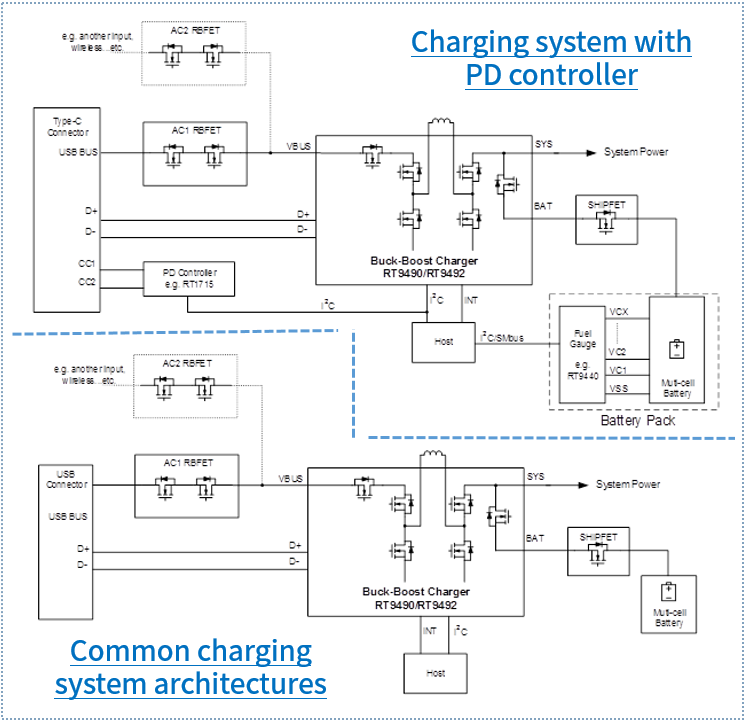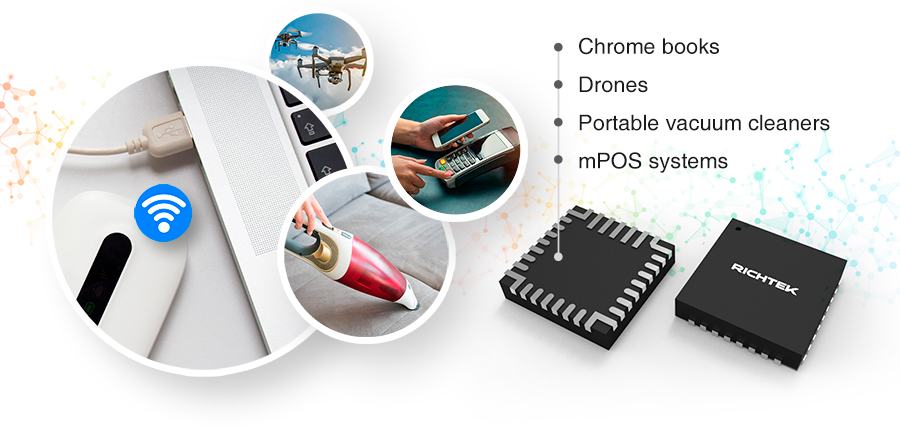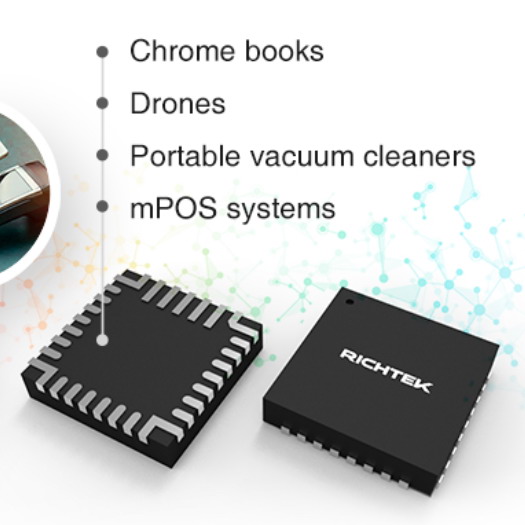I. Overview:
Richtek has successfully rolled out the RT9490 and RT9492 battery charging chips featuring a Buck-Boost architecture, which are specifically designed to meet the demands of 45W applications. These chips are capable of efficiently managing the charging process of 2 to 4 series-connected lithium-ion/polymer batteries at a current of 5A, while also overseeing the system's power path management. By incorporating low-impedance power switches, they achieve remarkable efficiency, significantly reducing charging time and extending the battery's discharge duration.
The functional configurations of the RT9490 and RT9492 are highly versatile, allowing for both hardware pin-based settings and software register-based adjustments. This flexibility enables seamless customization according to specific requirements. The charging parameters and system settings can be conveniently accessed through the I2C serial interface, offering a highly adaptable and universal charging solution that caters to a wide range of needs.
In terms of thermal performance, the recommended junction temperature range for these chips is set between -40°C and 130°C, while the ambient temperature range is specified from -40°C to 85°C. This ensures reliable operation across a diverse range of environmental conditions.
This innovative solution is particularly well-suited for various portable charging applications, including Chromebooks, drones, handheld vacuum cleaners, mPOS systems, and more. It provides a reliable and efficient power management solution for these devices, enhancing their overall performance and user experience.

Figure 1: Block Diagram of the RT949x Solution
II. Technical Parameters:
(1) Input voltage range: 3.6V to 24V.
(2) High conversion efficiency with programmable switching frequencies of 750kHz, 1MHz, or 1.5MHz.
(3) Synchronous buck/boost charger in switching mode.
(4) When the battery is 8V, input voltage is 9V, and current is 2A, charging efficiency reaches 96.7%.
(5) Supports average input current regulation (AICR) and minimum input voltage regulation (MIVR).
(6) At 2A, OTG efficiency for an 8.4V battery with 5V output is 93.8% (RT9490) and 93.4% (RT9492).
(7) Output voltage resolution of 10mV; USB-PD supported.
(8) Dual-input selection supported; BC1.2, host mode, FRS/seamless mode supported; 11-channel, 16-bit ADC supported.
(9) Low battery quiescent current; high precision for charger's CV and ICHG.
(10) Comprehensive protection features:
a. Over-temperature protection (OTP)
b. Junction temperature regulation (JTR)
c. Input protection (VAC OVP/VBUS OVP/OCP)
d. VBAT over-voltage protection (VBAT OVP)
e. System voltage protection (VSYS OVP/UVP)
f. System over-load protection (VSYS OLP)
g. Cycle-by-cycle over-current protection (OCP)
h. OTG low battery protection (OTG LBP)
i. OTG voltage protection (OTG OVP/UVP)
III. What are the Highlights of RT9490/RT9492?
(1) In applications with 2-cell batteries, RT9490/RT9492 can achieve an impressive efficiency of up to 96.7%. Equipped with dual-input control and USB On-The-Go functionality, it allows for precise regulation of the charging current and supports the USB-PD feature.
(2) With an extremely low discharge current of just 2.5µA, the battery's usability can be extended to over a month in transportation mode.
(3) When used in 2-cell battery setups, it offers a highly accurate charging voltage control of +/- 0.3%. This precision enables an additional 2.35% increase in charging capacity.
(4) The Fast Swap Role function is tailored for USB-C products, ensuring seamless and uninterrupted data and power transfer.
(5) The I2C interface is versatile, supporting an output voltage as low as 1.2V. This makes it compatible with 5nm process application processors, significantly expanding its range of applicable scenarios.
IV. Charging System Framework
The RT9490/RT9492 can manage two AC-RBFETs and is well-suited for dual-input applications. In this charging system setup, an external reverse blocking MOSFET (AC-RBFET) is situated between the USB connector and the RT9490/RT9492. The second AC-RBFET offers an alternative option for another input source, like wireless charging. Moreover, the RT9490/RT9492 supports D+/D- detection, allowing for the identification of BC1.2 and special adapters.
The SYS pin of the RT9490/RT9492 is responsible for powering the system. It comes with an automatic power path selection feature. This means it can draw power for the system from the bus, the battery, or even both sources. When it comes to the shipping mode, an external SHIPFET is placed between the battery and the BAT pin of the RT9490/RT9492. Communication between the host and the device takes place via the I2C serial interface.
In addition, for USB Type-C connections, a PD controller (such as the RT1715) can be utilized to communicate with the adapter using the USB Type-C and Power Delivery (PD) protocol. The diagram below illustrates the charging system that incorporates a PD controller.

Figure 2: Typical Charging System with a PD Controller
V. Main Application Areas:
Smartphones, tablets, and laptops
Drones
Portable devices and accessorie

Figure 3: Application
For more details about the RT9490/RT9492 solution, please contact us.









